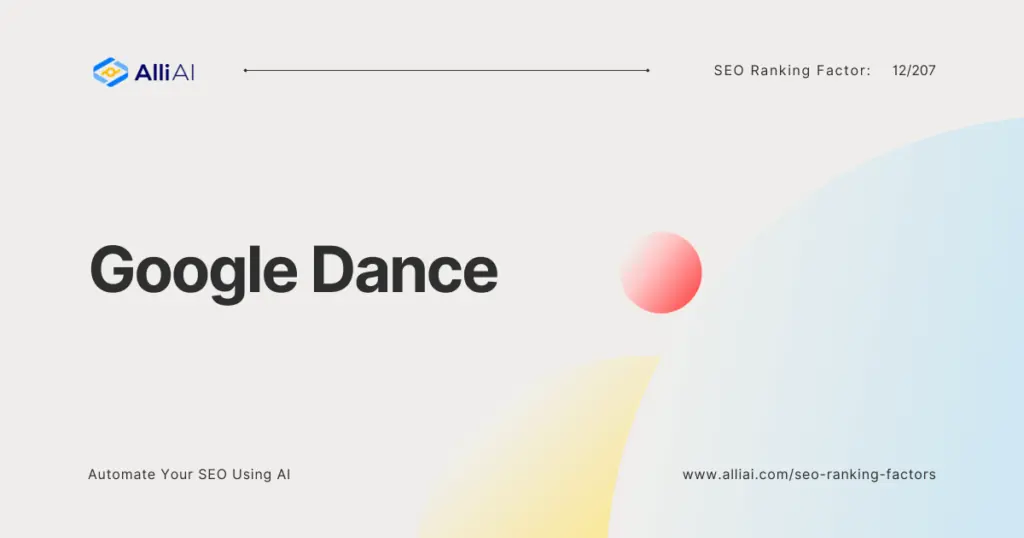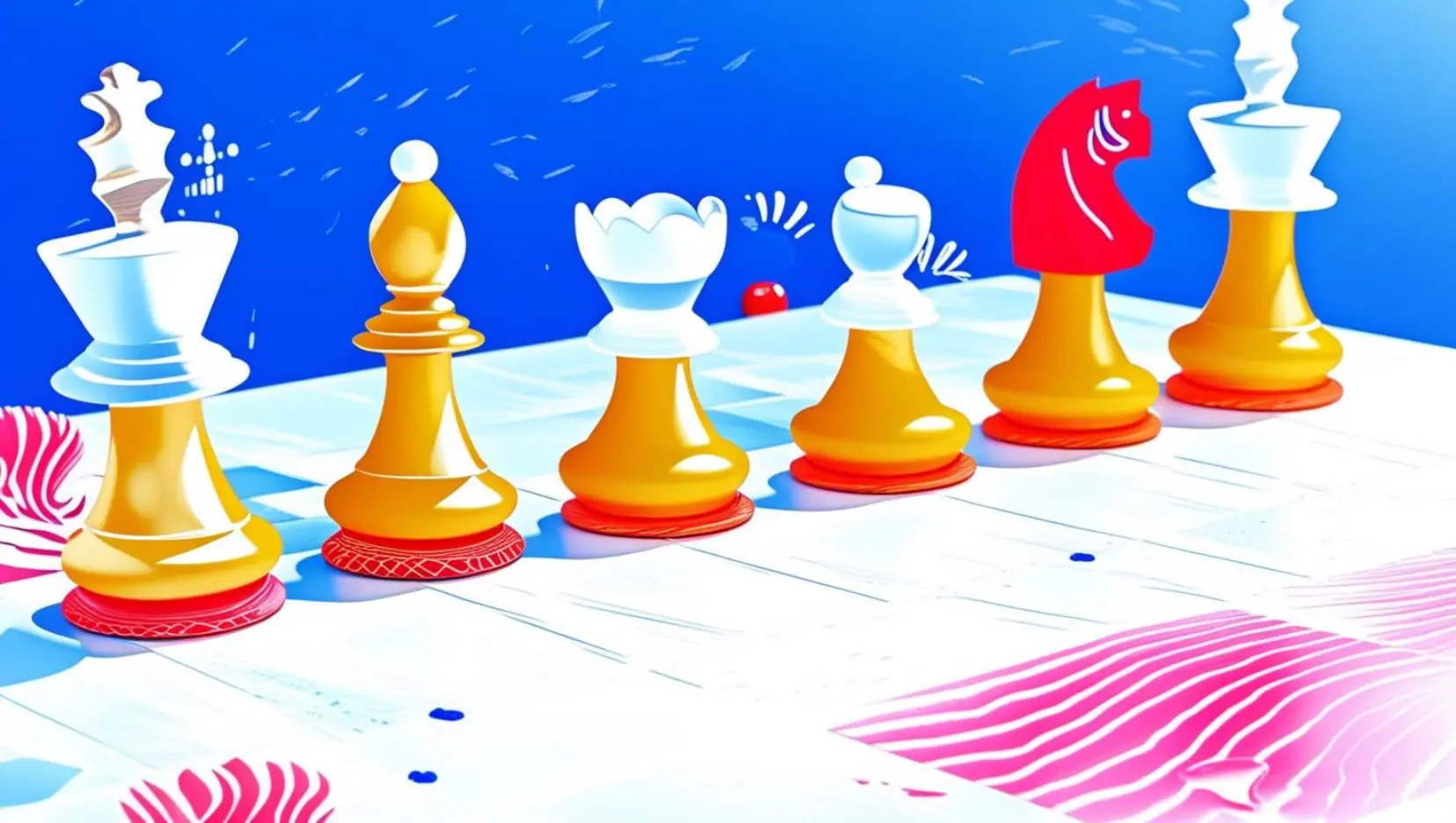What Does Google Dance Mean?
The Google Dance refers to the fluctuations in search engine rankings that occur when Google updates its algorithm. These changes can cause websites to move up or down in search results temporarily as the new algorithm sets in.
Where Does Google Dance Fit Into The Broader SEO Landscape?
The term “Google Dance” historically referred to the period when Google updated its search engine algorithms, causing website rankings to fluctify widely for a time. This phenomenon was more prevalent in the early 2000s, when the updates were less frequent but significant. Now, Google updates its algorithms more continuously, causing the term to become less relevant. In the broader SEO landscape, understanding and adapting to these fluctuations is crucial for optimizing search rankings, demonstrating the importance of staying current with Google’s frequent updates and modifications to ensure effective SEO strategy and execution.
Real Life Analogies or Metaphors to Explain Google Dance
1. Google Dance is like a high school prom: Just as students shuffle around the dance floor, swapping partners and finding their spot, websites shuffle around in Google’s search results, finding their new positions after an update.
2. Google Dance is like musical chairs: When the music (algorithm updates) starts, everyone (websites) rushes to find the best chair (rank). Once the music stops, some find better seats, while others are left with less desirable spots.
3. Google Dance is like a stock market fluctuation: Similar to how stock prices rise and fall based on market conditions, website rankings fluctuate based on changes in Google’s search algorithm.
4. Google Dance is like a wave in the ocean: Just as waves rise and fall unpredictably, website rankings can rise and fall with changes in Google’s search algorithms, often without clear warning.
5. Google Dance is like gardening: As seasons change, so does the appearance of a garden. In the same way, as Google updates its algorithms, the landscape of search engine rankings changes, sometimes unpredictably.
How the Google Dance Functions or is Implemented?
1. Updating Algorithm: Google constantly changes its algorithms to improve search results and adjust ranking factors.
2. Indexing Updates: New or updated web pages are crawled by Google’s bots and are indexed or re-indexed during this phase.
3. SERP Fluctuations: The visible effect of these updates is what most webmasters notice. Search engine results pages (SERPs) may show dramatic shifts in where sites are ranked.
4. Data Refresh: Google’s index undergoes a data refresh, which updates the information that Google stores about web pages.
5. Evaluation Period: During and after updates, Google evaluates how changes impact the quality of search results and user experience.
6. Stabilization: After a period (days or weeks), rankings typically stabilize until the next update cycle begins.
Impact Google Dance has on SEO
The Google Dance can result in significant fluctuations in website rankings due to the updating of Google’s index and algorithm changes. This can impact SEO performance by causing temporary instability in search visibility, influencing traffic volumes as rankings oscillate. For users, these changes might affect the discoverability and consistency of search results, potentially leading to a confusing user experience during the update period.
SEO Best Practices For Google Dance
1. Monitor Your Website’s Rankings Regularly:
– Check ranking positions daily using tools such as SEMrush, Ahrefs, or Google Search Console.
2. Ensure Your Server is Stable:
– Use reliable hosting to avoid downtime.
– Implement CDN and caching to improve load speed.
3. Update Content Frequently:
– Refresh old content with new data, links, and keywords.
– Add new, high-quality content regularly.
4. Optimize On-page Elements:
– Review and update meta titles and descriptions to include targeted keywords.
– Optimize header tags (H1, H2, etc.), ensuring they contain relevant keywords.
5. Build High-Quality Backlinks:
– Focus on acquiring backlinks from reputable, high-authority websites.
– Use guest posting, broken link building, and content marketing strategies.
6. Optimize Site Structure and Navigation:
– Ensure clear, logical navigation and URL structure.
– Implement breadcrumbs and schema markup for better indexing.
7. Increase Social Media Engagement:
– Share content regularly on social media channels.
– Engage with followers by responding to comments and messages.
8. Use Internal Linking Wisely:
– Link to other relevant pages within your website.
– Use anchor text that accurately describes the linked page.
9. Keep User Experience in Focus:
– Ensure mobile responsiveness.
– Improve site load time.
– Make the design intuitive and engaging.
10. Stay Updated with Google’s Changes:
– Follow Google’s Webmaster Blog and updates to adapt to algorithm changes.
– Participate in SEO forums and discussions to share insights and learn new strategies.
Common Mistakes To Avoid
1. Reacting Prematurely:
– Avoid making hasty changes to your website during a Google Dance period, as fluctuations in SERP (Search Engine Results Page) are normal at this time. Being patient and waiting for rankings to stabilize is prudent.
2. Assuming a Penalty:
– Misinterpreting routine rank fluctuations during a Google Dance as penalties can lead to unnecessary or harmful SEO changes. Analyze your analytics comprehensively before taking any action.
3. Over-optimizing:
– In response to volatile SERP positions, there’s a risk of over-optimizing content or backlinks. This can trigger penalties for practices like keyword stuffing or unnatural link building. Stick to balanced, user-focused SEO strategies.
4. Neglecting Website Updates:
– Ignoring the need to update or improve your website based on user experience and content relevance during Google Dance could result in a loss of ranking once the algorithm stabilizes. Continuously monitor and enhance site quality.
5. Failure to Adapt:
– Google Dance reflects ongoing updates and changes in Google’s algorithm. Not adapting to new SEO best practices can leave your site behind. Stay informed about SEO trends and algorithm shifts to keep your strategy effective.
By maintaining a strategic and informed approach during Google Dance, you can help ensure that your site remains stable and performs well in organic search results.






